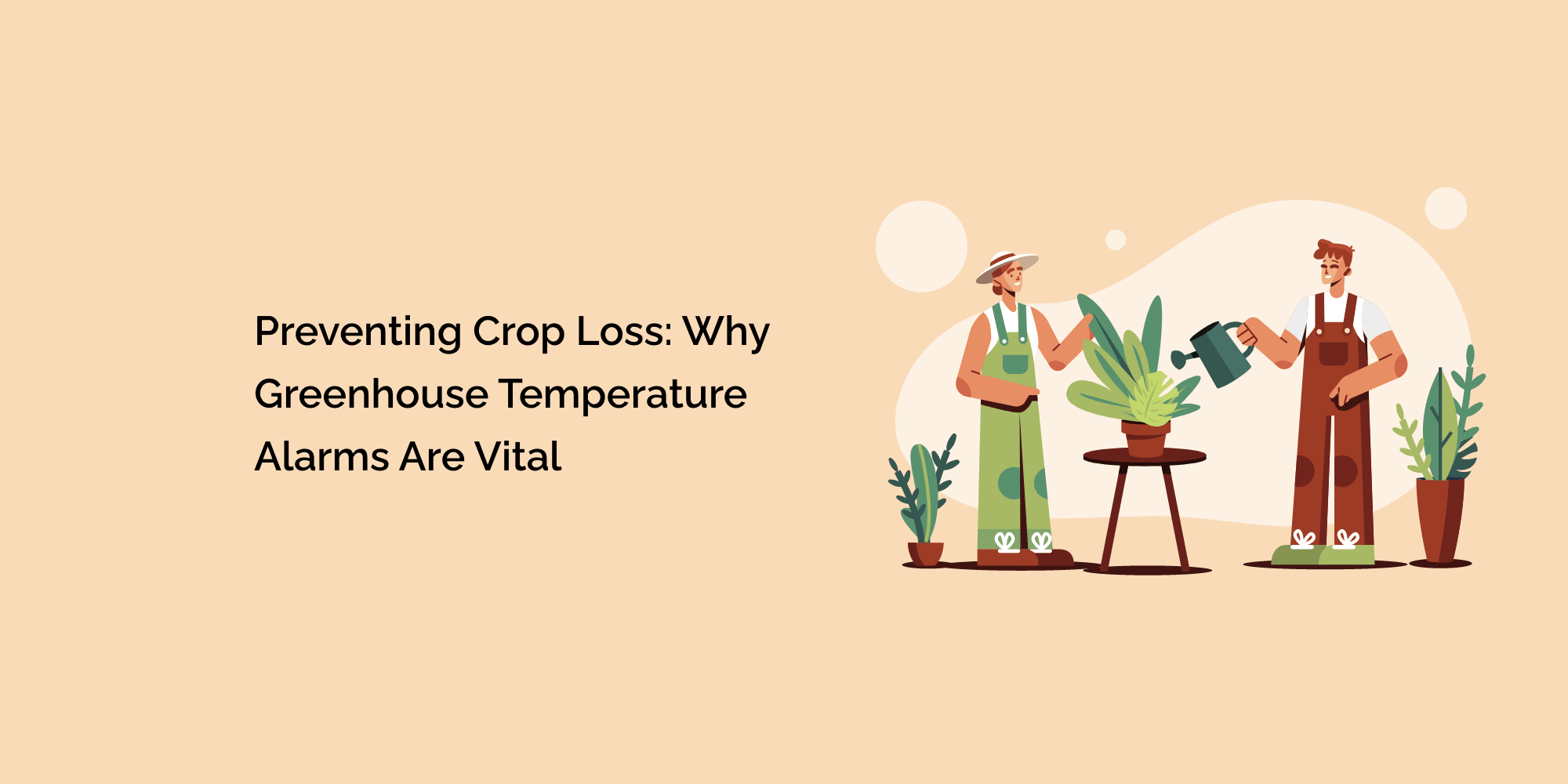Maintaining optimal growing conditions is crucial for greenhouse cultivation, and temperature control plays a vital role in crop production success. Fluctuations in temperature, whether too high or too low, can have detrimental effects on plants, leading to stress, reduced yield, and even crop loss. To mitigate these risks, greenhouse temperature alarms have become indispensable tools for growers. In this blog, we will explore the vital role of greenhouse temperature alarms in preventing crop loss. We will discuss the impact of temperature fluctuations on plant health, the consequences of inadequate temperature control, and the benefits of implementing temperature alarm systems. By understanding the significance of temperature monitoring and timely interventions, growers can protect their crops and optimize productivity in the greenhouse.
The Impact of Temperature Fluctuations on Plant Health
Temperature fluctuations can significantly impact plant health and development. In this section, we will discuss the physiological effects of extreme temperatures on plants, including the disruption of metabolic processes, impaired photosynthesis, water stress, nutrient imbalances, and increased susceptibility to pests and diseases. Understanding these effects highlights the need for precise temperature control in the greenhouse.
Consequences of Inadequate Temperature Control
Inadequate temperature control in the greenhouse can lead to severe consequences and crop loss. This section will explore the risks associated with temperature fluctuations, such as wilting, stunted growth, reduced fruit set, poor quality produce, and increased crop susceptibility to pests and diseases. We will emphasize the economic impact of crop loss and the long-term effects on the profitability and sustainability of greenhouse operations.
Benefits of Implementing Greenhouse Temperature Alarms
Implementing greenhouse temperature alarms offers numerous benefits in preventing crop loss. This section will discuss the advantages of temperature alarms, including early detection of temperature fluctuations, real-time monitoring and alerts, prompt interventions, improved plant health, optimized growth and yield, reduced reliance on manual tracking, and peace of mind for growers. These benefits underscore the vital role of temperature alarms in preserving crop health and maximizing productivity.
Key Features and Functionality of Greenhouse Temperature Alarms
Understanding the features and functionality of greenhouse temperature alarms is essential for making informed choices. This section will explore the critical components of temperature alarm systems, including temperature sensors, controllers or data loggers, and alert mechanisms. We will discuss the importance of accurate temperature sensing, broad temperature range capability, adjustable temperature thresholds, real-time monitoring, remote access, data logging and analysis, connectivity options, and user-friendly interfaces. By considering these features, growers can select a temperature alarm system that best suits their greenhouse requirements.
Implementing Effective Temperature Management Strategies
In addition to temperature alarms, implementing effective temperature management strategies is crucial. This section will discuss best practices for temperature control in the greenhouse, such as shading techniques, ventilation systems, heating and cooling mechanisms, and automation. We will emphasize the importance of integrating temperature alarms with these strategies for a comprehensive and proactive approach to temperature management.
The Role of Data Analysis in Temperature Monitoring
Data analysis plays a crucial role in temperature monitoring for proactive decision-making. This section will highlight the significance of data logging, historical research, and trend identification. By analyzing temperature data, growers can identify patterns, anticipate potential temperature fluctuations, and optimize temperature control strategies for improved crop health and productivity.
Cost Considerations and Return on Investment
While greenhouse temperature alarms are an investment, it is essential to consider their long-term benefits and return on investment. This section will discuss the cost considerations, including the initial setup, ongoing maintenance, and potential savings from preventing crop loss, improving yields, and reducing manual monitoring. We will emphasize the importance of balancing costs with the value provided by temperature alarms.
Case Studies and Success Stories
To illustrate the effectiveness of greenhouse temperature alarms, this section will present case studies and success stories from growers who have implemented temperature monitoring systems. We will highlight real-life examples where timely alerts and interventions saved crops, increased yields, and improved greenhouse operations. These stories serve as testimonials of the vital role of temperature alarms in preventing crop loss.
Certainly! Here are some frequently asked questions (FAQs) about greenhouse temperature alarms and their importance in preventing crop loss:
What is a greenhouse temperature alarm?
A greenhouse temperature alarm is a monitoring system designed to track temperature levels within a greenhouse environment. It includes temperature sensors, controllers or data loggers, and alert mechanisms to notify when temperature thresholds are exceeded, or the desired levels below are dropped.
Why is greenhouse temperature alarms critical?
Greenhouse temperature alarms are essential for preventing crop loss. They help maintain optimal temperature levels for plant growth, prevent stress or damage to plants caused by temperature fluctuations, and allow growers to take timely corrective actions to preserve crop health.
What are the consequences of temperature fluctuations on plants?
Temperature fluctuations can adversely affect plants, including stress, reduced growth rates, poor fruit set, decreased yields, and increased vulnerability to pests and diseases. Consistent and optimal temperature control is crucial for preventing these negative consequences.
Conclusion
Greenhouse temperature alarms are vital tools in preventing crop loss and maximizing productivity. By understanding the impact of temperature fluctuations on plant health, recognizing the consequences of inadequate temperature control, and implementing temperature alarms, growers can proactively monitor and maintain optimal growing conditions. The benefits of temperature alarms include early detection, real-time monitoring, prompt interventions, improved plant health, optimized yield, and peace of mind for growers. By incorporating temperature alarms into comprehensive temperature management strategies and leveraging data analysis, growers can protect their crops, enhance profitability, and ensure sustainable greenhouse operations. Investing in greenhouse temperature alarms is an investment in crop health, productivity, and long-term success.








